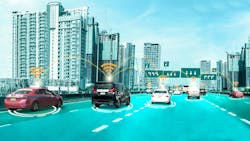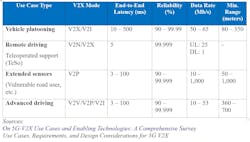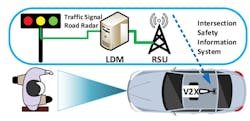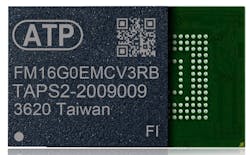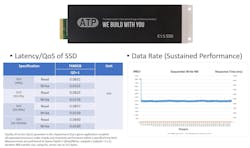Connectivity Crossroads: Demand Soars for V2X Storage
What you’ll learn:
- Market trends and growth projections for the connected cars sector.
- DSRC versus C-V2X technologies and their impact on V2X communications.
- Key storage considerations for V2X, including performance, reliability, and edge computing.
Automotive innovations are driving unprecedented levels of connectivity and automation, generating colossal amounts of data that monitor external surroundings and sense conditions inside the car. They also allow vehicles to communicate not just with one another, but also with their environment.
This transformational technology is called vehicle-to-everything (V2X). It includes vehicle-to-vehicle (V2V), vehicle-to-infrastructure (V2I), vehicle-to-pedestrian (V2P) and vehicle-to-network (V2N) communications.
By minimizing (and if possible, eliminating) human error, easing traffic, and promoting the advancement of autonomous driving, V2X improves road safety and reduces the number of road accidents and fatalities. To assure safety with little to no human interaction, cars must make quick judgments based on situational awareness, which makes real-time data sharing an essential component of V2X.
Market Situation Statistics and Connected-Car Market Growth
Research by the McKinsey Center for Future Mobility shows that advanced driver-assistance systems (ADAS) and autonomous-driving systems (ADS) have the potential to generate $300 to $400 billion (U.S.) in revenue by 2035. Level 4 (high driving automation) will account for an increasing portion of this revenue, reaching between $170 and $230 billion (U.S.).
The connected-car market is undoubtedly expanding. This growth is driven by the rising demand for enhanced safety features and the push toward fully autonomous vehicles (Fig. 1).
DSRC and C-V2X Technologies: Enabling V2X Communications
Dedicated short-range communications (DSRC) and C-V2X (cellular vehicle-to-everything) are the two primary technologies enabling V2X communications.
DSRC is a well-established V2X technology that was introduced more than nine years before C-V2X. It’s a mature technology that provides low latency and reliable communications specifically for automotive use. C-V2X uses existing 4G LTE cellular networks for V2X communications, providing broader coverage and reliability. With the rollout of 5G, it’s poised to offer ultra-low latency, high bandwidth, and improved reliability.
To improve real-time communication and decision-making, the U.S. Federal Communications Commission has mandated that V2X technologies operate in the 5.9-GHz spectrum starting in 2021.
“The Safety Band is a band of wireless spectrum at 5.9 GHz reserved for transportation-related communications among the devices that support connected and automated vehicles. Interacting via the interference-free Safety Band, these high-precision devices enable communications between vehicles and traffic lights, generate real-time alerts or warnings, and adjust signals to give emergency vehicles priority in heavy traffic—dramatically improving our transportation safety and mobility.”— U.S. Department of Transportation (Fig. 2).
Performance Requirements for Different V2X Use Cases
The performance requirements for V2X use cases vary based on application. Higher values represent more stringent requirements, such as wider range or lower latency. Different use cases require different communications systems that can support long range, low latency, high reliability, and high data rate (see table).
The vehicle platooning scenario in Figure 3 shows the Join/Leave, Announcement/Warning, and Group communication aspects.
Figure 4 shows the concept of an Intersection Safety Information Systems, which consists of road radar, traffic signal, local dynamic map (LDM) server, and roadside unit (RSU). Here, a pedestrian and traffic signal are detected, and the vehicle is warned or automatically controlled to avoid collision, allowing the vehicle to pass through the intersection safely.
Key Observations on V2X from a Storage Point of View
The vast amount of data generated by V2X systems requires suitable storage solutions that meet specific performance and application requirements.
Important considerations when choosing the right storage solution for V2X include:
- Cost: On a typical day, sensors from autonomous/connected cars can generate several terabytes of data. The 5G cost burden will be too high if this data must be uploaded to the cloud. Network availability can also be limited and there’s the expense to consider as well. A number of storage solutions for automotive systems and infrastructure will still be available before 2030, including e.MMC (Fig. 5), UFS, and edge-computing storage form factors like E1.S and BGA SSDs.
- Drive performance and reliability:
- Performance (including thermal management for the SSD), especially in harsh environments with extreme temperatures, vibrations, and shocks.
- Low latency (quality of service or QoS) to ensure quick data access and processing, which is critical for real-time, mission-critical applications.
- Bigger capacity on domain/centralized storage to store large volumes of data from sensors, camera, communication modules, and more.
- Drive writes per day (DWPD) to ensure long service life
- Thermal dissipation and simulation capability with system
- Centralization optional (multi-port, name spaces, SRIOV)
- Removable preferred (for data reading after collision)
- Storage security is part of the overall system security that must be considered. Meeting standards like TCG Opal 2.0+ and the use of firmware signatures help.
E1.S SSDs are hot-swappable (Fig. 6). They’re designed to provide high QoS support as well as sustained throughput.
V2X Needs Strong Storage Solutions
The automotive industry continues to evolve, ramping up the demand for advanced V2X storage solutions. ATP's range of storage solutions come in diverse form factors, capacities, performance specifications, and endurance ratings to handle the complex and varied requirements of V2X. For more information on ATP products engineered for V2X, visit the ATP website.
References
https://www.transportation.gov/sites/dot.gov/files/2020-02/SB_What_Is_It_and_What_Is_It_Used_For.pdf
About the Author

Chris Lien
Director, NAND Solutions Group, ATP Electronics
Chris Lien is the Director of the NAND Solutions Group at ATP Electronics.
